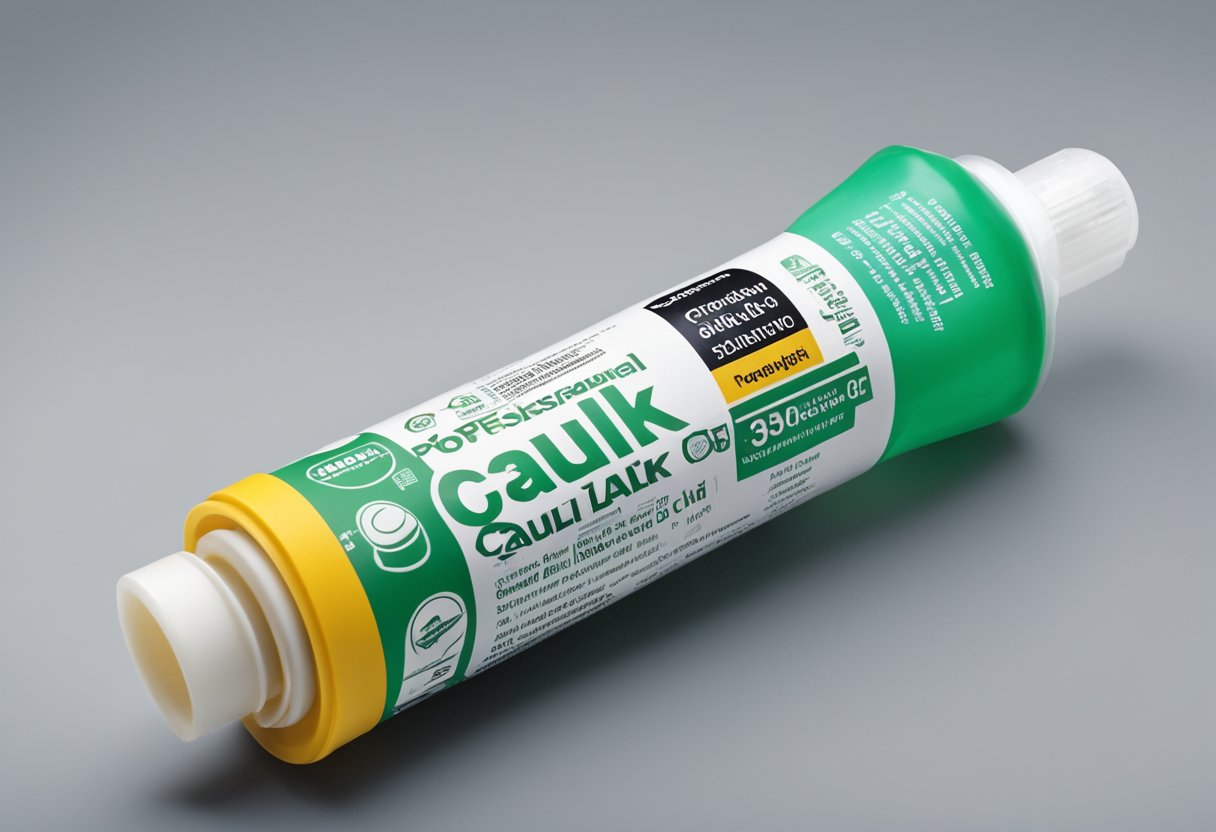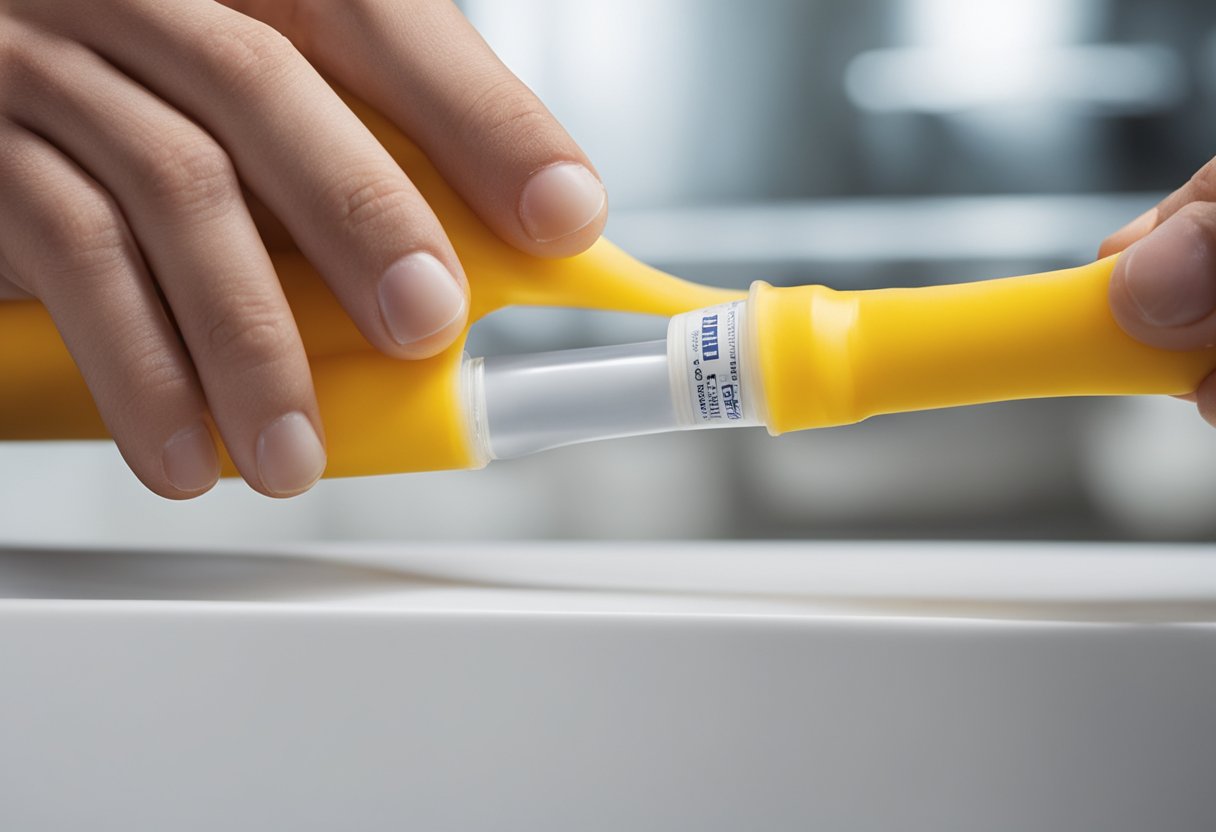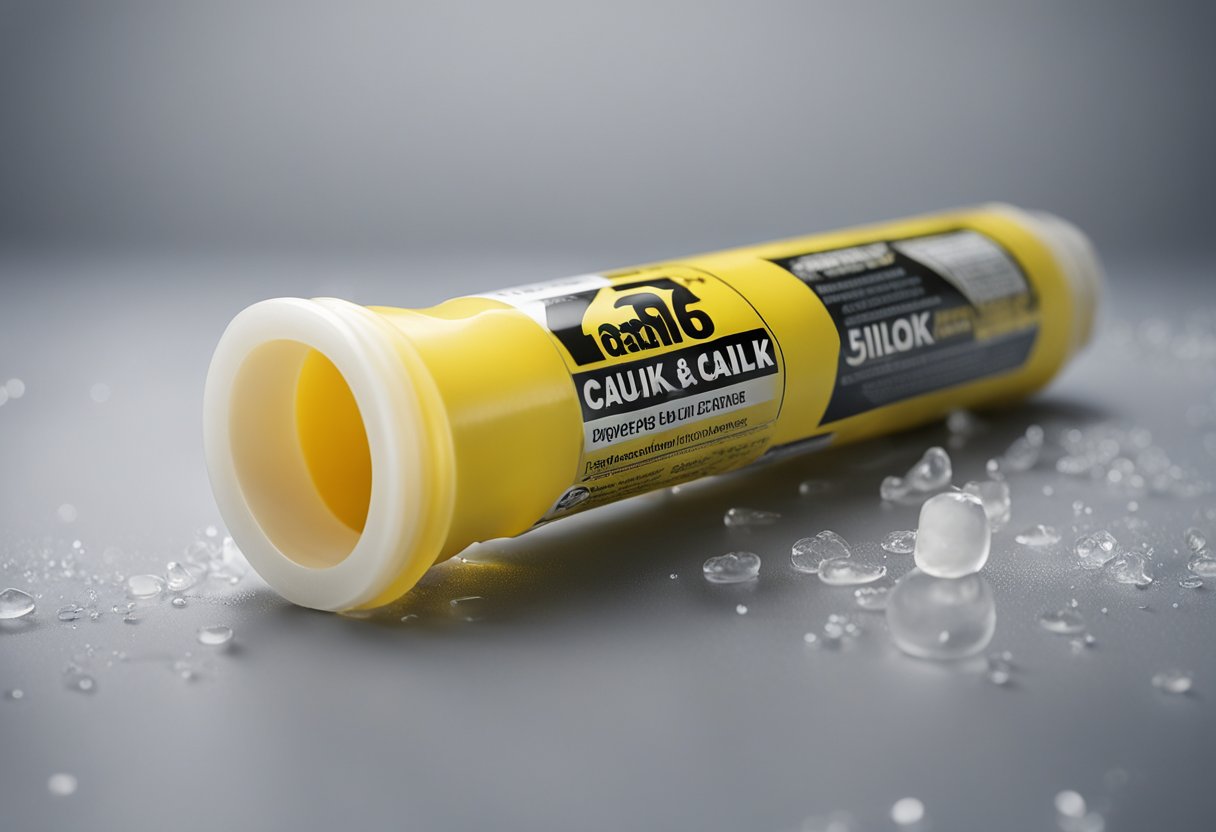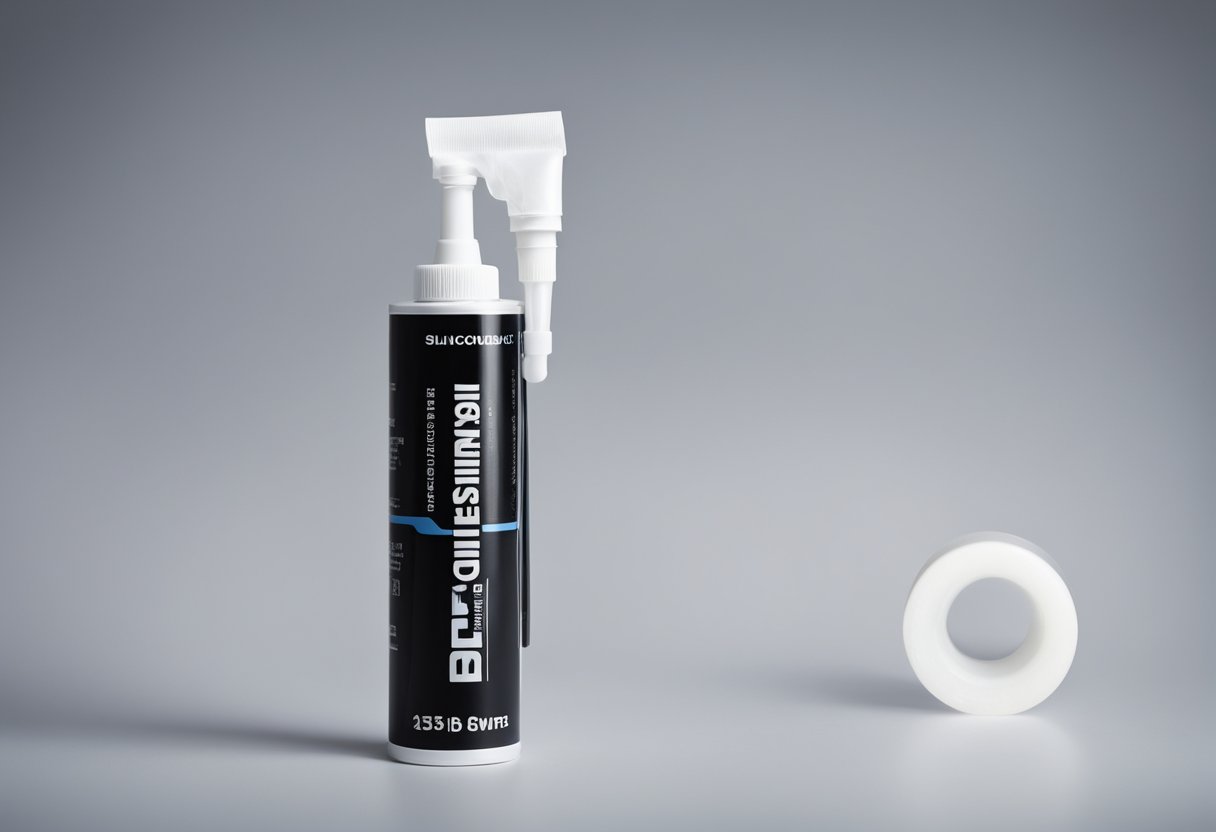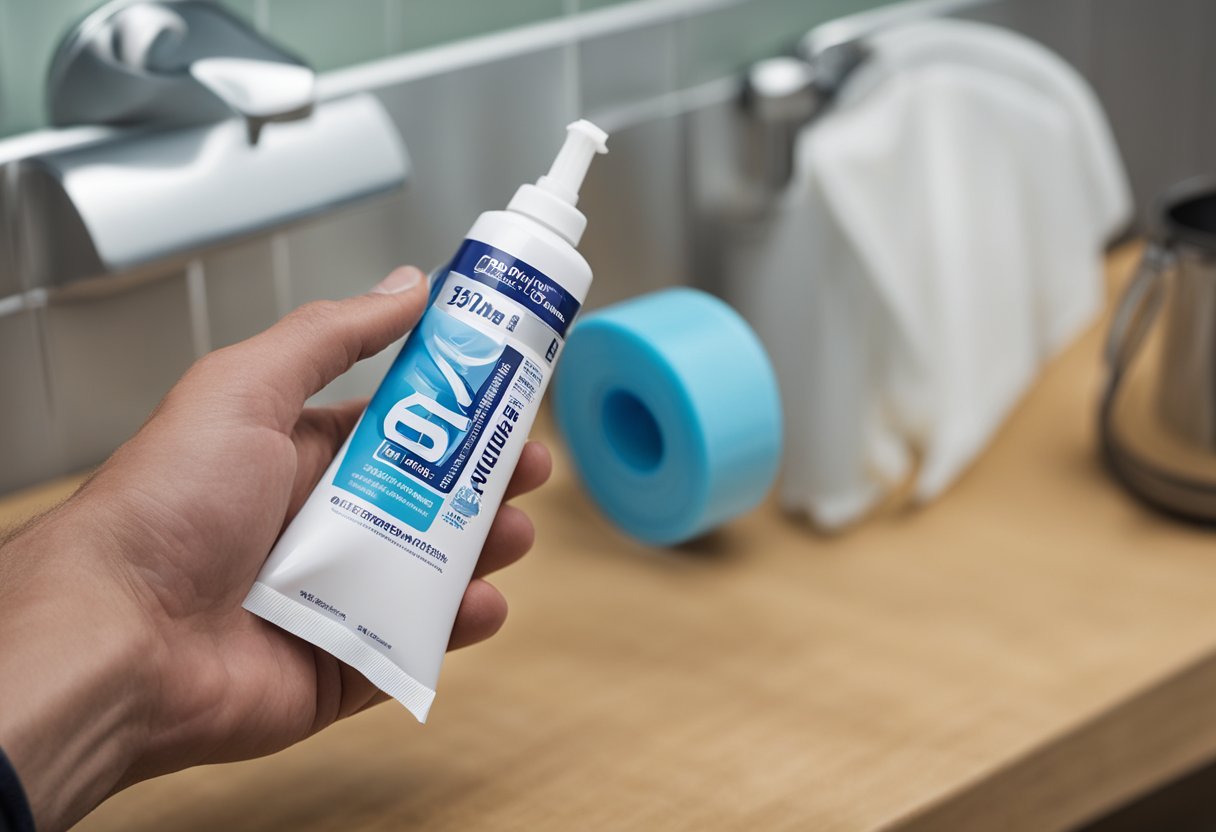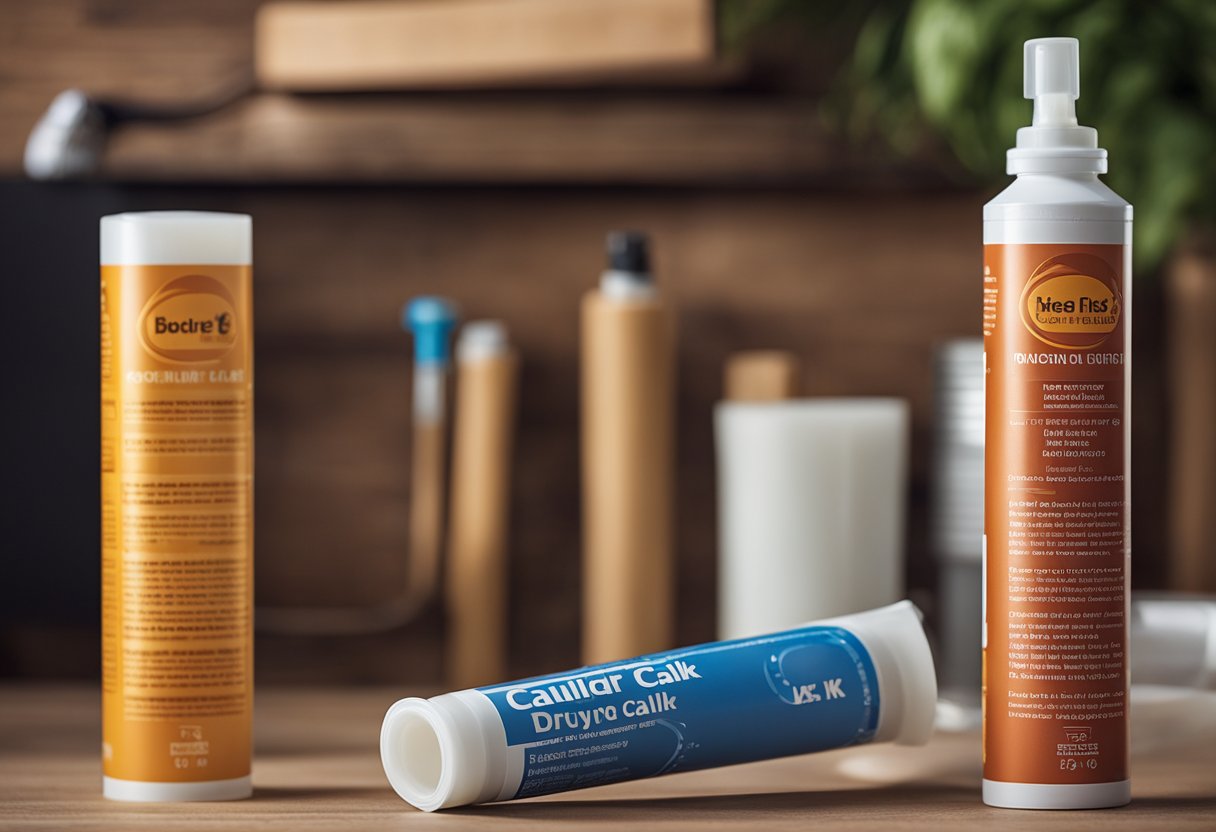When it comes to home improvement projects, applying silicone caulk is a common task. It is a versatile sealant that can be used to fill gaps and cracks in different surfaces such as windows, doors, and bathtubs. However, one of the most common problems that people encounter after applying silicone caulk is that it does not dry properly. This can be frustrating, especially if you need to use the area where the caulk was applied.
Understanding the factors that affect the drying time of silicone caulk is crucial in ensuring that it cures properly. Some of the factors that affect the drying time include humidity, temperature, and the thickness of the caulk. Additionally, choosing the right caulk for your project and applying it correctly can also affect the drying time. In this article, I will discuss the reasons why silicone caulk may not dry and provide some tips on how to accelerate the drying process.
Key Takeaways
- Understanding the factors that affect the drying time of silicone caulk is crucial
- Choosing the right caulk and applying it correctly can affect the drying time
- Proper maintenance and precautions can prevent problems with silicone caulk drying
Understanding Silicone Caulk
https://www.youtube.com/watch?v=HFLjOvhLKsU&embed=true
As someone who has worked with silicone caulk, it’s essential to understand what silicone caulk is before delving into why it might not dry. Silicone caulk is a type of adhesive that is used to seal gaps and joints in various household applications. It is made from a silicone-based formula that is designed to cure, creating a waterproof seal that is resistant to mold and mildew.
One of the main benefits of silicone caulk is its waterproof properties. It is an excellent choice for sealing around sinks, tubs, and showers because it is resistant to water damage. Additionally, silicone caulk is known for its flexibility, which allows it to expand and contract with temperature changes without cracking or breaking.
It is essential to note that silicone caulk has a limited shelf life, and it’s essential to check the expiration date before using it. Using expired silicone caulk can result in a product that won’t cure and will remain sticky to the touch.
Manufacturers create silicone caulk to cure at a specific rate, and factors such as humidity, temperature, and the thickness of the application can affect the curing time. If the silicone caulk is not drying, it could be due to any of the above factors or a combination of them.
In conclusion, understanding the properties of silicone caulk and the factors that can affect its curing time is essential to ensure a successful application. It is also crucial to check the expiration date and store the product correctly to ensure it cures correctly.
Curing Process of Silicone Caulk
https://www.youtube.com/watch?v=f_d_BjHFeVU&embed=true
Silicone caulk is a popular sealant used for various applications due to its flexibility and durability. However, it can be frustrating when the caulk does not dry or cure properly. In this section, I will explain the curing process of silicone caulk and the factors that affect its drying time.
The curing process of silicone caulk involves the release of acetic acid, which is responsible for the formation of a skin on the surface of the caulk. This skin prevents the caulk from curing properly, and it needs to be removed before the caulk can dry. To remove the skin, you can use a sponge or cloth soaked in water and vinegar solution. After removing the skin, the caulk needs to be left to dry for the recommended curing time.
The curing time of silicone caulk varies depending on the temperature and humidity of the environment. Higher temperatures and lower humidity levels speed up the curing process, while lower temperatures and higher humidity levels slow it down. The ideal temperature for curing silicone caulk is between 40°F and 100°F, and the ideal humidity level is between 40% and 60%.
It is important to note that the drying time of silicone caulk is not the same as the curing time. The drying process involves the evaporation of water from the caulk, while the curing process involves the cross-linking of the silicone molecules. The drying time of silicone caulk depends on the thickness of the caulk, the temperature, and the humidity of the environment. In general, it takes about 24 hours for silicone caulk to dry completely.
To ensure that silicone caulk dries and cures properly, it is essential to follow the manufacturer’s instructions. This includes applying the caulk in the recommended thickness, using the correct temperature and humidity levels, and allowing the caulk to dry and cure for the recommended time. By doing so, you can ensure that your silicone caulk will provide a long-lasting and effective seal.
Factors Affecting Drying Time
https://www.youtube.com/watch?v=yPsSAOFZMz8&embed=true
When it comes to silicone caulk, drying time can be affected by a number of factors. As a homeowner, it’s important to understand these factors to ensure that your caulk dries properly and provides the necessary seal. Here are some of the key factors that can affect the drying time of silicone caulk:
Temperature
Temperature can have a significant impact on the drying time of silicone caulk. In general, warmer temperatures will help the caulk dry more quickly, while cooler temperatures will slow down the drying process. If you’re working in a cooler environment, you may need to allow more time for the caulk to dry.
Humidity
Humidity is another important factor to consider. High humidity can slow down the drying process, while low humidity can speed it up. If you’re working in a high-humidity environment, you may need to allow more time for the caulk to dry. Additionally, it’s important to note that if you’re caulking a bathroom or other high-moisture area, the caulk may take longer to dry due to the increased moisture in the air.
Airflow
Airflow can also impact the drying time of silicone caulk. If you’re working in an area with good ventilation, the caulk may dry more quickly. However, if you’re working in an area with poor ventilation, the caulk may take longer to dry. Additionally, if you’re working in an area with a lot of air movement, such as near an open window or fan, the caulk may dry more quickly.
Cure Time
Cure time refers to the amount of time it takes for the caulk to fully harden and form a strong seal. While drying time and cure time are related, they are not the same thing. In general, silicone caulk will take 24 to 48 hours to cure completely. However, this can vary depending on the temperature, humidity, and other factors.
Drying Process
Finally, it’s important to understand the drying process for silicone caulk. Unlike some other types of caulk, silicone caulk does not dry through evaporation. Instead, it cures through a chemical process. This means that it may feel dry to the touch before it is fully cured. It’s important to wait until the caulk is fully cured before painting or exposing it to water.
By understanding these factors, you can ensure that your silicone caulk dries properly and provides the necessary seal.
Accelerating the Drying Process
https://www.youtube.com/watch?v=cVEyOel5goc&embed=true
When you apply silicone caulk, you want it to dry as quickly as possible so that you can continue with your project. While silicone caulk can take up to 24 hours to dry completely, there are some steps you can take to speed up the process.
One of the easiest ways to speed up the drying process is to increase air circulation. You can do this by using a fan or opening a window. The movement of air will help to evaporate the moisture in the caulk, which will speed up the drying process. Make sure that the fan is not blowing directly on the caulk, as this can cause it to dry unevenly.
Another option is to use heat to speed up the drying process. You can use a hair dryer on the low or cool setting to blow warm air onto the caulk. This will help to evaporate the moisture in the caulk, which will speed up the drying process. Be careful not to use too much heat, as this can cause the caulk to dry too quickly and crack.
If you are using silicone caulk in a bathroom or other humid environment, you may need to take additional steps to speed up the drying process. You can use a dehumidifier to remove moisture from the air, which will help the caulk to dry more quickly. You can also use a space heater to warm up the room and increase air circulation.
In summary, there are several ways to speed up the drying process of silicone caulk. Increasing air circulation, using heat, and reducing humidity are all effective methods. By following these tips, you can ensure that your silicone caulk dries quickly and evenly, allowing you to move on to the next step of your project.
Common Problems and Solutions
https://www.youtube.com/watch?v=h0I0pwTigE0&embed=true
As a professional handyman, I have seen many homeowners struggle with silicone caulk that won’t dry. Here are some common problems and solutions that I have encountered:
Wet Caulk
One of the most common reasons why caulk won’t dry is because it is still wet. If you have just applied the caulk, you need to give it time to dry. The drying time will depend on the humidity and temperature of the room. You can speed up the drying process by using a fan or a caulk accelerator. However, if the caulk is still wet after a week, you may need to remove it and reapply it with a new tube.
Sticky Caulk
Another common problem with silicone caulk is that it can be sticky and not dry properly. If the caulk is sticky, it may be because you applied too much caulk or because the humidity is too high. To fix this problem, you can use a putty knife to remove the excess caulk, and then use a caulk gun to apply a new layer of caulk. Make sure you apply the caulk in thin layers to avoid the caulk becoming sticky again.
Cracks
If you have applied caulk to fill in a crack, but the caulk is not drying, it may be because the crack is too large. In this case, you need to remove the caulk and fill in the crack with a backer rod before applying the caulk again. The backer rod will provide support to the caulk and help it dry properly.
Expiration
Silicone caulk has a shelf life, and if it has expired, it may not dry properly. Make sure you check the expiration date on the tube before using it. If the caulk has expired, you need to dispose of it and purchase a new tube.
In conclusion, there are several reasons why silicone caulk may not dry properly. Wet caulk, sticky caulk, cracks, and expired caulk are some of the common problems that homeowners face. By following the solutions mentioned above, you can ensure that your silicone caulk dries properly and provides a tight seal.
Applying Silicone Caulk Correctly
As a DIY enthusiast, I’ve learned that applying silicone caulk can be tricky, especially if you’re new to the task. However, with the right tools and technique, you can get the job done correctly. Here are some tips on how to apply silicone caulk correctly.
Use the Right Caulk Gun
One of the most important tools you need when applying silicone caulk is a caulk gun. When choosing a caulk gun, make sure it’s the right size for the job. A larger caulk gun is better for bigger projects, while a smaller one is ideal for small jobs. Also, make sure the caulk gun is in good working condition, with no cracks or damage.
Prepare the Surface
Before applying silicone caulk, it’s essential to prepare the surface properly. Clean the area thoroughly, removing any dirt, dust, or debris. If you’re working on a nonporous surface like glass or metal, you may need to use a solvent to clean the area. Once the surface is clean, let it dry completely before applying the caulk.
Apply the Caulk Correctly
When applying silicone caulk, it’s crucial to apply it in a continuous bead. Start at one end of the area you’re caulking and work your way to the other end, applying a steady, even pressure on the caulk gun trigger. Keep the caulk gun at a 45-degree angle to the surface, and make sure the caulk is filling the gap completely.
Follow the Instructions
Different types of silicone caulk have different drying times and curing processes. Make sure you read the instructions on the caulk tube carefully before starting the project. Pay attention to the recommended drying time and make sure you allow enough time for the caulk to dry completely before painting or using the area.
In conclusion, applying silicone caulk correctly is essential for a successful DIY project. By using the right caulk gun, preparing the surface correctly, applying the caulk in a continuous bead, and following the instructions carefully, you can achieve a professional-looking finish.
Choosing the Right Caulk for Your Project
When it comes to choosing the right caulk for your project, there are a few things to consider. First, you need to determine what type of caulk you need. There are several types of caulk available on the market, including latex, polyurethane, and acrylic latex. Each type has its own unique properties and is best suited for specific applications.
Latex caulk is a popular choice for sealing gaps and cracks in interior surfaces. It is easy to apply and clean up, making it ideal for DIY projects. However, it is not recommended for use in areas that are exposed to moisture or extreme temperatures.
Acrylic latex caulk is a hybrid of latex and acrylic caulk. It offers the ease of use and clean up of latex caulk, with the added durability of acrylic. It is a good choice for sealing gaps and cracks in interior and exterior surfaces.
Polyurethane caulk is a more durable option than latex or acrylic latex caulk. It is resistant to moisture, temperature changes, and even some chemicals. It is ideal for use in high-traffic areas or areas that are exposed to harsh weather conditions.
When choosing the right caulk for your project, it is important to consider the surface you will be applying it to. Some caulk is better suited for certain surfaces than others. For example, polyurethane caulk is ideal for concrete and masonry surfaces, while acrylic latex caulk is better suited for wood and drywall.
Ultimately, the type of caulk you choose will depend on the specific needs of your project. It is important to read the manufacturer’s instructions carefully and choose a caulk that is appropriate for your specific application.
Maintenance and Precautions
As a homeowner, I have had my fair share of experiences with silicone caulk not drying. In my experience, the main reasons why silicone caulk doesn’t dry are humidity and moisture. These factors can be more prevalent in areas such as the bathroom, shower, bathtub, and windows.
To avoid these issues, it is important to take some precautions before and during the application of silicone caulk. First, ensure that the area is clean and dry before applying the caulk. Any moisture or dirt on the surface will prevent the caulk from adhering properly. I recommend using a clean cloth to wipe down the area and letting it dry completely before applying the caulk.
Another precaution to take is to ensure that the caulk is applied in a well-ventilated area. This will help to reduce the humidity level in the room and prevent the caulk from taking longer to dry. In addition, using a dehumidifier can help to reduce the humidity level in the room.
When applying the caulk, it is important to use the right amount and apply it evenly. Using too much caulk can prevent it from drying properly, while applying it unevenly can cause some areas to dry faster than others. I recommend using a caulk gun to apply the caulk, as it allows for more precise application.
Lastly, it is important to keep an eye out for mold and mildew growth around the caulked area. If you notice any signs of mold or mildew, it is important to remove and replace the caulk as soon as possible to prevent further growth.
By taking these precautions, you can ensure that your silicone caulk dries properly and lasts for a long time.
Cleaning Up After Caulking
After caulking, it is essential to clean up the area thoroughly to remove any residue and ensure a neat finish. In this section, I will provide some tips on how to clean up after caulking.
Removing Excess Caulk
To remove excess caulk, wait until it dries and then use a plastic scraper to gently scrape it off. Be careful not to scratch the surface you are working on. If you need to remove wet caulk, use a caulk removal tool or a plastic putty knife to work it beneath the caulk line. Once you have removed as much caulk as possible, use a damp cloth to wipe away any remaining residue.
Cleaning Up Silicone Residue
Silicone residue can be challenging to remove, but it is essential to do so to ensure a neat finish. To remove silicone residue, try using a mixture of vinegar and baking soda, which can break down the caulk and facilitate its removal. Alternatively, use a silicone caulk remover, which is specifically designed to dissolve silicone residue.
Cleaning Up Latex Paint
If you accidentally get latex paint on your caulk, don’t worry. You can remove it by gently scraping it off with a plastic scraper or a putty knife. If the paint has dried, use a damp cloth to soften it, then scrape it off. Be careful not to scratch the surface you are working on.
Cleaning Up Caulk Tubes
After using a caulk tube, it is essential to clean it up to ensure it is ready for the next use. To clean up a caulk tube, remove the nozzle and wipe away any excess caulk with a damp cloth. Then, use a caulk tube cleaner to remove any remaining residue.
Removing Residue
If you have any residue left after cleaning up, use a residue remover to get rid of it. Residue removers are specifically designed to dissolve any remaining residue and leave the surface clean and smooth.
In conclusion, cleaning up after caulking is an essential step in ensuring a neat finish. By following these tips, you can remove excess caulk, clean up silicone residue, clean up latex paint, clean up caulk tubes, and remove any remaining residue.
Frequently Asked Questions
What is the best caulk for showers?
The best caulk for showers is silicone caulk. It is waterproof and flexible, making it ideal for use in areas with high moisture content. Silicone caulk also has excellent adhesion and can withstand frequent exposure to water and cleaning products.
How long should I let caulk dry before showering?
It is recommended to wait at least 24 hours before using the shower after applying silicone caulk. This allows the caulk to fully cure and ensures that it will not wash away or peel off.
Does silicone need time to dry?
Yes, silicone caulk needs time to dry and cure. The drying time can vary depending on factors such as temperature, humidity, and the thickness of the caulk. It is important to follow the manufacturer’s instructions for drying and curing times to ensure the best results.
Why is my silicone still sticky?
If your silicone caulk is still sticky after the recommended drying time, it may be due to high humidity or low temperature. These conditions can slow down the drying process and prevent the caulk from curing properly. To fix this issue, you can try increasing the temperature and ventilation in the room or using a dehumidifier.
Can you speed up silicone drying?
Yes, there are a few ways to speed up the drying process of silicone caulk. One way is to use a quick-drying caulk that is specifically designed for faster drying times. Another way is to increase the temperature and ventilation in the room, which can help the caulk dry more quickly. However, it is important to note that rushing the drying process can compromise the quality of the caulk and lead to issues down the line.
How long should silicone caulk dry before getting wet?
It is recommended to wait at least 24 hours before exposing silicone caulk to water or moisture. This allows the caulk to fully cure and ensures that it will not wash away or peel off. If you need to use the shower or bathtub before the recommended drying time, you can cover the caulk with plastic wrap to protect it from water.

Hi, I’m Sal Muller of Tooltrip.com. My DIY experience led me to understand essential power tools for home projects. Tooltrip.com guides enthusiasts and professionals in choosing right tools for any job. I provide concise top tool reviews for easier, efficient DIY.

